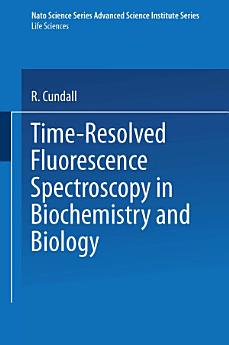Time-Resolved Fluorescence Spectroscopy in Biochemistry and Biology
R. Cundall
Nov 2013 · NATO Science Series A Book 69 · Springer Science & Business Media
Ebook
785
Pages
reportRatings and reviews aren’t verified Learn More
About this ebook
At the time that the editors conceived the idea of trying to organize the meeting on which the contents of this volume are based and which became, in March 1980, a NATO Advanced Study Institute, the techniques of time-resolved fluorescence spectroscopy, in both the nanosecond and sub-nanosecond time-domains, might reasonably have been said to be coming of age, both in their execution and in the analysis and interpretation of the results obtained. These techniques, then as now, comprised mainly a number of pulse methods using laser, flash-lamp or, most recently, synchrotron radiation. In addition, significant developments in the more classical phase approach had also rendered that method popular, utilizing either modulation of an otherwise continuous source or, again recently, the ultra-rapid pulse rate attainable with a synchrotron source. In general terms, time-resolved fluorescence studies are capable, under appropriate conditions, of supplying direct kinetic information on both photophysics and various aspects of molecular, macromolecular and supramolecular structure and dynamics. The nanosecond and sub-nanosecond time-scales directly probed render these techniques particularly appropriate in studying relaxation and fluctuation processes in macromolecules, particularly biopolymers (e. g. proteins, nucleic acids), in supramolecular assemblies such as cell membranes, and in a variety of relatively simpler model systems.
Rate this ebook
Tell us what you think.
Reading information
Smartphones and tablets
Install the Google Play Books app for Android and iPad/iPhone. It syncs automatically with your account and allows you to read online or offline wherever you are.
Laptops and computers
You can listen to audiobooks purchased on Google Play using your computer's web browser.
eReaders and other devices
To read on e-ink devices like Kobo eReaders, you'll need to download a file and transfer it to your device. Follow the detailed Help Center instructions to transfer the files to supported eReaders.








